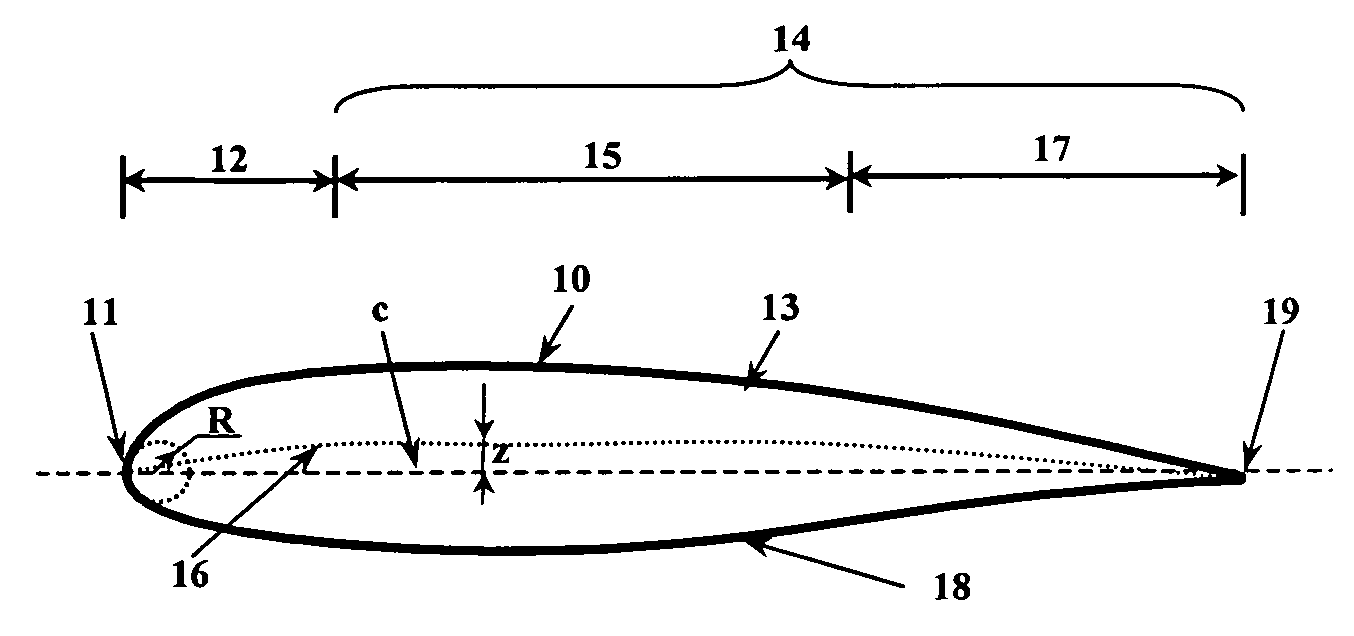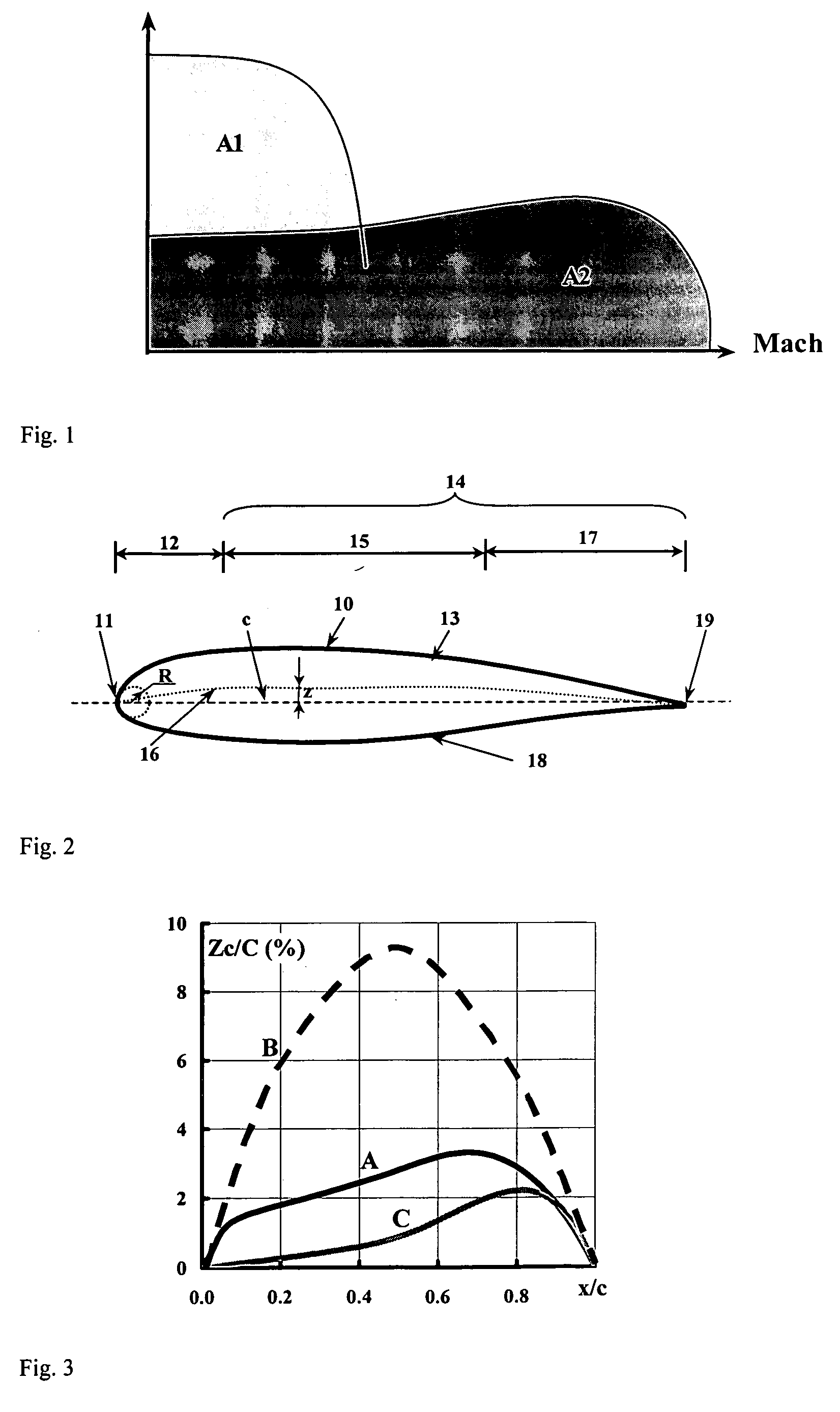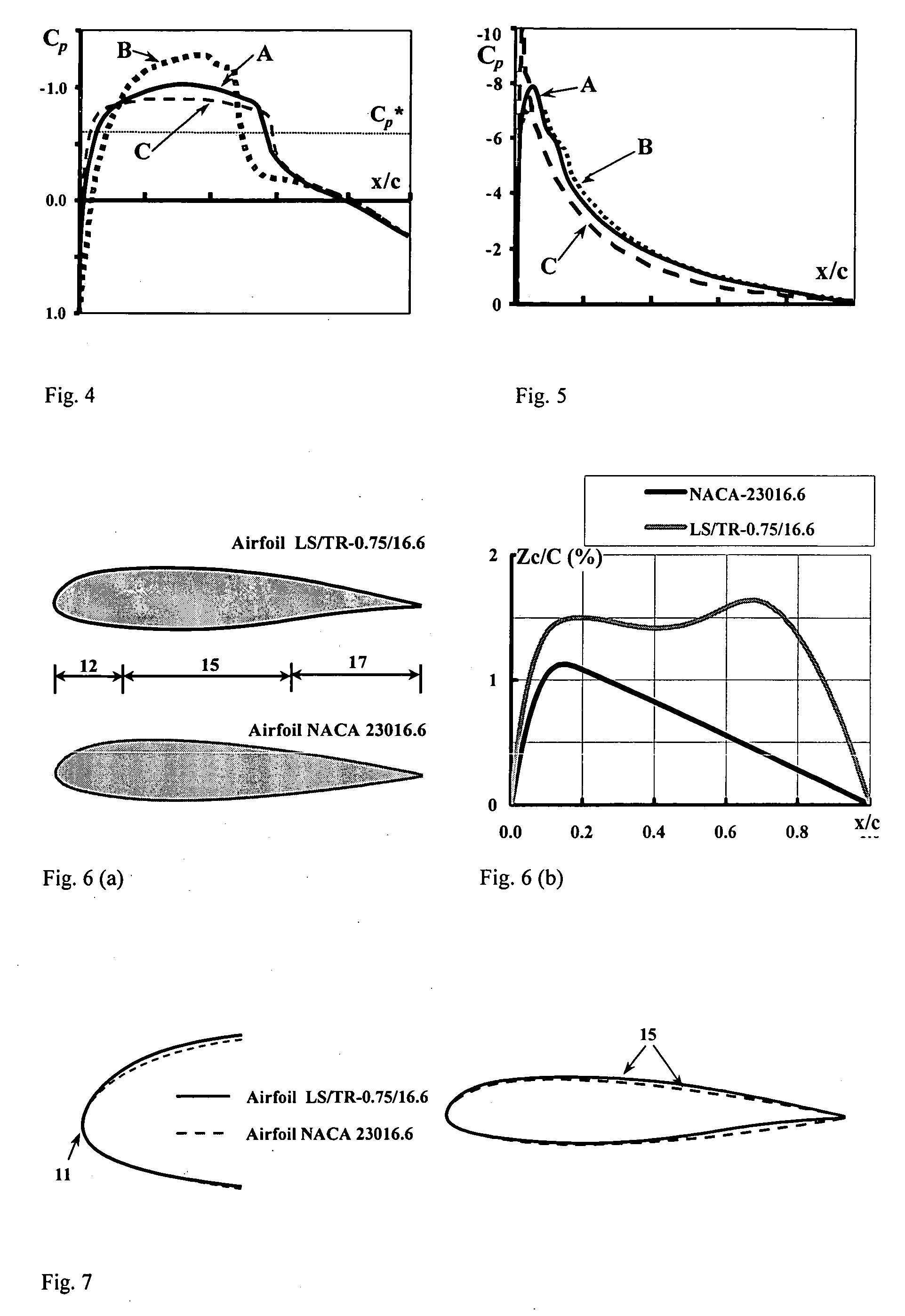Hybrid transonic-subsonic aerofoils
a technology of aerofoils and transonics, applied in the field of hybrid transonic subsonic aerofoils, can solve the problems of premature formation of shock waves on the upper surface of airfoils, induced boundary layer separation, transonic flight of high-speed air vehicles, etc., to improve the subsonic performance, improve the transonic performance, and suffer a small loss of subsonic performance.
- Summary
- Abstract
- Description
- Claims
- Application Information
AI Technical Summary
Benefits of technology
Problems solved by technology
Method used
Image
Examples
example 1
[0100] A low lift hybrid airfoil according to the invention is illustrated in FIG. 6(a), designated herein as LS / TR-0.75 / 16.6, and is geometrically compared with a subsonic airfoil NACA-23016.6 that was chosen as reference case for illustrating some aerodynamic features of the invention. FIG. 6(b) compares the camber distributions of the two aerofoils. The airfoil LS / TR-0.75 / 16.6 was designed for high transonic cruise Mach number of M=0.75, relatively small design lift coefficient of Cl=0.1, Reynolds Number Re=3.0*106, constrained pitching moment and maximum thickness of t / cmax=16.6%. The subsonic design point was not fully fixed, but rather allowed to float, such as to provide the best possible design lift coefficient (if possible, better than that of the NACA reference aerofoil) at a Mach number of about 0.1. The hybrid aerofoil LS / TR-0.75 / 16.6 was designed using NACA-23016.6 as a starting point, and using trial and error techniques for providing the requires aerodynamic performan...
example 2
[0103] In this example, two high-lift, hybrid airfoils, designated as HC-0.7 / 13.8A and HC-0.7 / 13.9B, which differ one from the other in the relative bluntness of their leading edges, though more in their camber distributions, are illustrated in FIG. 10, compared with a datum or reference transonic aerofoil TC-07 / 13.8 that was specially designed for the same flight conditions. The transonic design point was set at M=0.7, design lift coefficient of 0.7, (Re=1.5*106), t / c=13.8%; the subsonic design point was set at Mach number of between about 0.1 and about 0.2, t / c=13.9%, with design lift coefficient left undefined, the design of the aerofoils being such as to maximize this parameter.
[0104] The reference transonic aerofoil TC-07 / 13.8 was designed using standard design methodology of transonic airfoils, in particular supercritical technology adjusted to incorporate the design principles of NLF (natural laminar flow airfoils) airfoils, for the design point M=0.7, design lift coefficien...
PUM
 Login to View More
Login to View More Abstract
Description
Claims
Application Information
 Login to View More
Login to View More - R&D
- Intellectual Property
- Life Sciences
- Materials
- Tech Scout
- Unparalleled Data Quality
- Higher Quality Content
- 60% Fewer Hallucinations
Browse by: Latest US Patents, China's latest patents, Technical Efficacy Thesaurus, Application Domain, Technology Topic, Popular Technical Reports.
© 2025 PatSnap. All rights reserved.Legal|Privacy policy|Modern Slavery Act Transparency Statement|Sitemap|About US| Contact US: help@patsnap.com



